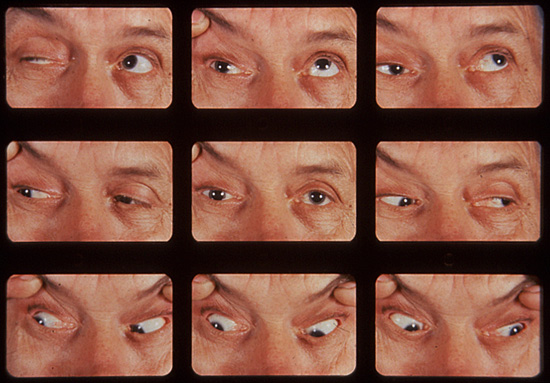Myasthenia gravis: Difference between revisions
Created page with "'''Myasthenia Gravis (MG)''' is an autoimmune disorder <ref>Alberts B., Johnson A., Lewis J., Raff M., Roberts K., Waltzer P.(2008) Molecular Biology of TH..." |
No edit summary |
||
| Line 1: | Line 1: | ||
'''Myasthenia Gravis (MG)''' is an [[Autoimmune disease|autoimmune disorder]] <ref>Alberts B., Johnson A., Lewis J., Raff M., Roberts K., Waltzer P.(2008) Molecular Biology of THE CELL, 5th edition, New York: Garland Science. p1549</ref>in which antibodies belonginging to the sufferer inhibit [[Acetylcholine|acetylcholine]] ([[Acetylcholine|ACh]] - a neurotransmitter) from binding to their target receptor proteins ([[AChR|AChR]]) <ref>J. Clin. Invest. 116:2843–2854 (2006). doi:10.1172/JCI29894.</ref>in the [[Neuromuscular junction|neuromuscular junction]]. By preventing communication at [[Synapse|synapses]], muscular contraction is inhibited in the affected individual causing muscle weakness in the sufferer, often leading to characteristic symptoms such as drooping eye lids ([[Ptosis|ptosis]]) and a "snarling" smile. Acetylcholine is a neurotransmitter that allows the transmission of signals across synapses in neuromuscular junction by diffusing across the synaptic cleft and binding to receptor proteins. If the ACh can not bind to it's complementary binding sites on the [[Motor end plate|motor end plate]], the transmission of the [[Action potential|action potential]] ceases and contraction does not take place.The disease is relatively rare affecting 1 in every 10,000 people in the United Kingdom<ref>NHS, Myasthenia Gravis.(2011)Available at http://www.nhs.uk/Conditions/Myasthenia-gravis/Pages/Introduction.aspx (last accessed 30.11.12)</ref> and may be triggered by particular viruses or medicines, though certain individuals may be more prone to developing such an autoimmune disease due to their genetic background. | '''Myasthenia Gravis (MG)''' is an [[Autoimmune disease|autoimmune disorder]] <ref>Alberts B., Johnson A., Lewis J., Raff M., Roberts K., Waltzer P.(2008) Molecular Biology of THE CELL, 5th edition, New York: Garland Science. p1549</ref>in which antibodies belonginging to the sufferer inhibit [[Acetylcholine|acetylcholine]] ([[Acetylcholine|ACh]] - a neurotransmitter) from binding to their target receptor proteins ([[AChR|AChR]]) <ref>J. Clin. Invest. 116:2843–2854 (2006). doi:10.1172/JCI29894.</ref>in the [[Neuromuscular junction|neuromuscular junction]]. By preventing communication at [[Synapse|synapses]], muscular contraction is inhibited in the affected individual causing muscle weakness in the sufferer, often leading to characteristic symptoms such as drooping eye lids ([[Ptosis|ptosis]]) and a "snarling" smile. [[Acetylcholine|Acetylcholine]] is a neurotransmitter that allows the transmission of signals across synapses in neuromuscular junction by diffusing across the synaptic cleft and binding to receptor proteins. If the ACh can not bind to it's complementary binding sites on the [[Motor end plate|motor end plate]], the transmission of the [[Action potential|action potential]] ceases and contraction does not take place.The disease is relatively rare affecting 1 in every 10,000 people in the United Kingdom<ref>NHS, Myasthenia Gravis.(2011)Available at http://www.nhs.uk/Conditions/Myasthenia-gravis/Pages/Introduction.aspx (last accessed 30.11.12)</ref> and may be triggered by particular viruses or medicines, though certain individuals may be more prone to developing such an autoimmune disease due to their genetic background. | ||
=== Symptoms <ref>NHS, Myasthenia Gravis.(2011)Available at http://www.nhs.uk/Conditions/Myasthenia-gravis/Pages/Introduction.aspx (last accessed 30.11.12)</ref><br> === | |||
#Drooping of the eyelids (ptosis) and face.<br> | #Drooping of the eyelids (ptosis) and face.<br> | ||
| Line 12: | Line 12: | ||
[[Image:Mgsupdivision.jpg]] | [[Image:Mgsupdivision.jpg]] | ||
=== | === References<br> === | ||
<references /><br> | <references /><br> | ||
Revision as of 11:14, 1 December 2012
Myasthenia Gravis (MG) is an autoimmune disorder [1]in which antibodies belonginging to the sufferer inhibit acetylcholine (ACh - a neurotransmitter) from binding to their target receptor proteins (AChR) [2]in the neuromuscular junction. By preventing communication at synapses, muscular contraction is inhibited in the affected individual causing muscle weakness in the sufferer, often leading to characteristic symptoms such as drooping eye lids (ptosis) and a "snarling" smile. Acetylcholine is a neurotransmitter that allows the transmission of signals across synapses in neuromuscular junction by diffusing across the synaptic cleft and binding to receptor proteins. If the ACh can not bind to it's complementary binding sites on the motor end plate, the transmission of the action potential ceases and contraction does not take place.The disease is relatively rare affecting 1 in every 10,000 people in the United Kingdom[3] and may be triggered by particular viruses or medicines, though certain individuals may be more prone to developing such an autoimmune disease due to their genetic background.
Symptoms [4]
- Drooping of the eyelids (ptosis) and face.
- Blurred or double vision. (Due to weakening of the eye muscles)
- Muscle fatigue in the neck. (Caused by the strain of holding the head up)
- Difficulty swallowing.
- Difficulty breathing.
- Progressive weakening of the leg and arm muscles.
References
- ↑ Alberts B., Johnson A., Lewis J., Raff M., Roberts K., Waltzer P.(2008) Molecular Biology of THE CELL, 5th edition, New York: Garland Science. p1549
- ↑ J. Clin. Invest. 116:2843–2854 (2006). doi:10.1172/JCI29894.
- ↑ NHS, Myasthenia Gravis.(2011)Available at http://www.nhs.uk/Conditions/Myasthenia-gravis/Pages/Introduction.aspx (last accessed 30.11.12)
- ↑ NHS, Myasthenia Gravis.(2011)Available at http://www.nhs.uk/Conditions/Myasthenia-gravis/Pages/Introduction.aspx (last accessed 30.11.12)
